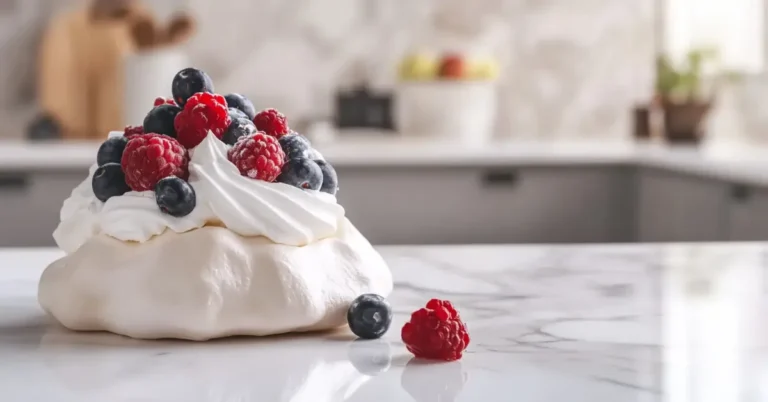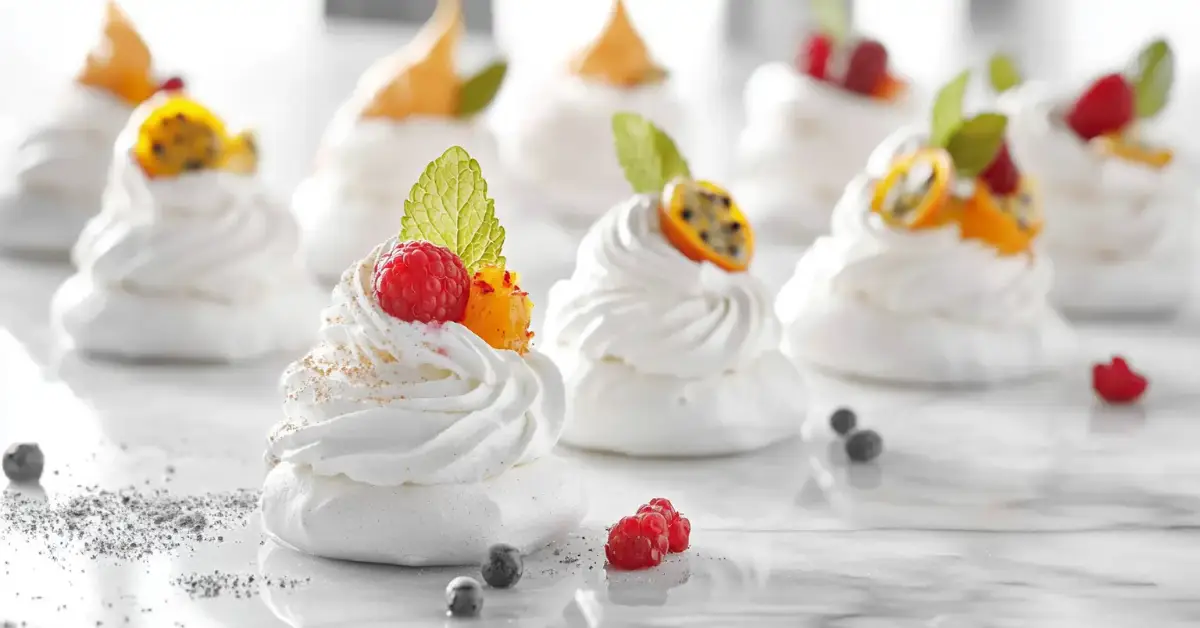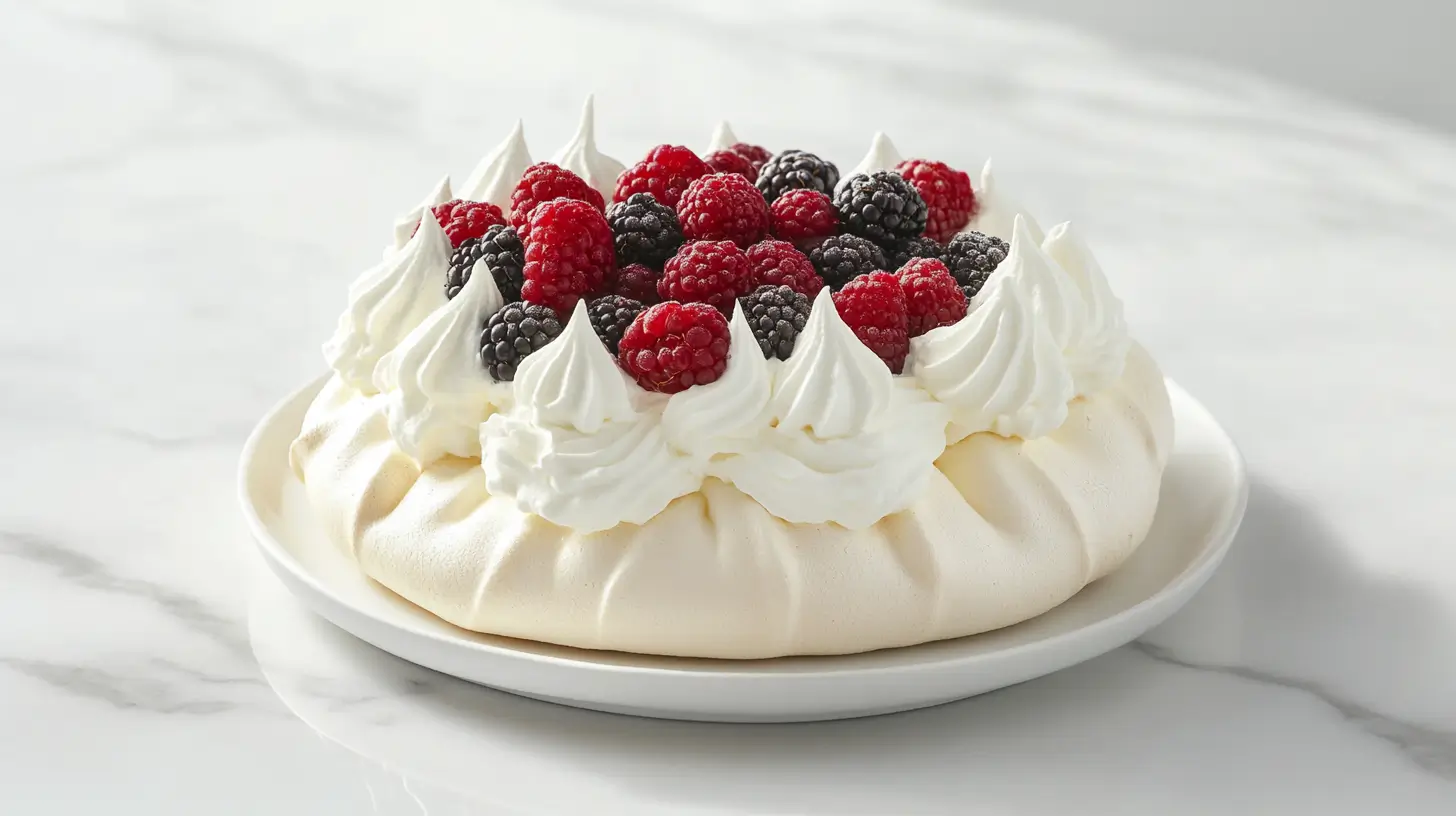Pavlova is a beloved dessert known for its crisp shell and soft, marshmallow-like center. Traditionally, cornflour (cornstarch) is added to the meringue mixture to stabilize it, helping achieve the characteristic texture. However, many home bakers wonder: Can you make pavlova without cornflour? Whether due to dietary restrictions, taste preferences, or ingredient availability, there are excellent alternatives that can replace cornflour while still delivering a delicious result.
In this guide, we’ll examine pavlova ingredients, the role of cornflour, and why some bakers choose to omit it. We’ll also explore the best substitutes and how they impact the final texture. If you’re looking for a reliable method to make pavlova without cornflour, you’ll find a step-by-step guide to ensure your dessert turns out perfectly.
Understanding Pavlova and Its Ingredients
What is Pavlova?
Pavlova is a meringue-based dessert named after the Russian ballerina Anna Pavlova. It features a crisp exterior and a light, airy interior, making it a favorite for special occasions. This dessert is typically topped with fresh fruit and whipped cream, offering a balance between sweetness and acidity.
The primary ingredients in pavlova include:
- Egg whites – Provide structure and volume.
- Sugar – Stabilizes the meringue and adds sweetness.
- Acid (vinegar, lemon juice, or cream of tartar) – Helps strengthen the egg whites.
- Cornflour – Traditionally used to retain moisture and improve texture.
Since cornflour isn’t essential for the chemical stability of meringue, it can be replaced or omitted altogether. But, can you make pavlova without cornflour and still achieve the right texture? The answer depends on how you adjust the recipe.
Role of Cornflour in Traditional Pavlova
Cornflour is often added in small amounts—typically 1 to 2 teaspoons per batch. It helps:
- Prevent weeping by absorbing excess moisture.
- Maintain a soft, marshmallow-like interior while keeping the shell crisp.
- Improve stability to prevent collapsing after baking.
If you remove cornflour without making adjustments, your pavlova might turn out overly dry or lack structure. However, with the right substitute, you can still enjoy a perfectly textured dessert.
Why Some People Avoid Cornflour
Dietary Restrictions and Allergies
One of the most common reasons people ask, can you make pavlova without cornflour, is due to dietary concerns. Some individuals have corn allergies, which can cause adverse reactions when consuming products derived from corn. Others follow a grain-free or paleo diet, making cornflour unsuitable.
By using alternatives like arrowroot powder or potato starch, those with dietary restrictions can still enjoy homemade pavlova without compromising texture or flavor.
Texture and Taste Preferences
Not all bakers enjoy the effect that cornflour has on pavlova. Some argue that it makes the interior too soft or gummy. Additionally, cornflour can leave a slight aftertaste if not fully incorporated.
If you prefer a crispier texture, removing cornflour may actually enhance the dessert. However, this requires careful adjustments to baking time and moisture control.
Best Substitutes for Cornflour in Pavlova
Arrowroot Powder
Arrowroot powder is one of the best alternatives to cornflour in pavlova. It is a starch extracted from tropical plants and works similarly by absorbing moisture.
Why It Works:
- Mimics cornflour in thickening and stabilizing.
- Provides a neutral taste with no aftertaste.
- Enhances the crispness of the outer shell.
To substitute, use an equal amount of arrowroot powder in place of cornflour.
Cream of Tartar
Cream of tartar is an acidic byproduct of winemaking that strengthens egg whites and prevents sugar crystallization. While it doesn’t act as a starch, it enhances stability, making it a useful alternative.
Benefits:
- Improves meringue structure without adding starch.
- Helps maintain the volume of whipped egg whites.
- Creates a light and airy texture.
Use ½ teaspoon of cream of tartar per 4 egg whites when replacing cornflour.
Potato Starch
Potato starch is a gluten-free alternative with strong moisture-absorbing properties. It creates a smooth, airy interior without affecting flavor.
Key Advantages:
- Helps maintain a chewy center without gumminess.
- Improves structural integrity.
- Provides a texture similar to traditional pavlova.
Replace cornflour with an equal amount of potato starch.
Tapioca Starch
Tapioca starch, derived from cassava root, is another excellent substitute. It works well in meringue-based desserts due to its fine texture.
Why It’s Effective:
- Enhances elasticity and prevents cracking.
- Absorbs moisture, reducing the risk of weeping.
- Creates a slightly softer interior compared to other substitutes.
Use an equal amount of tapioca starch in place of cornflour for best results.
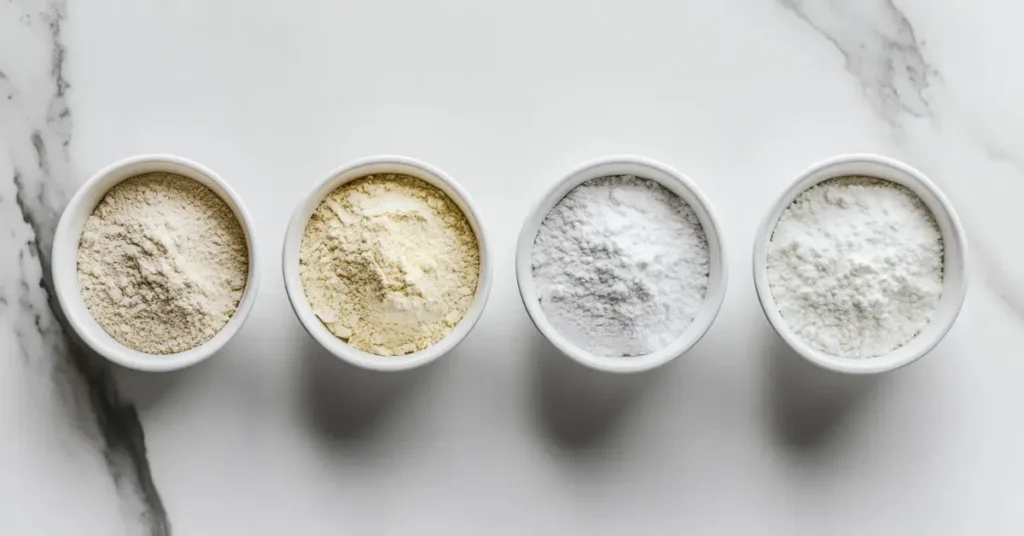
How Each Substitute Affects Pavlova
Crispness and Stability
Each substitute impacts the crispness of pavlova differently:
| Substitute | Crispness Level | Stability |
|---|---|---|
| Arrowroot Powder | High | Strong |
| Cream of Tartar | Moderate | Strong |
| Potato Starch | High | Moderate |
| Tapioca Starch | Moderate | High |
Softness and Chewiness
The interior texture varies based on the chosen substitute:
- Arrowroot powder creates a firmer structure.
- Cream of tartar results in a lighter, airier texture.
- Potato starch provides a soft and slightly chewy center.
- Tapioca starch delivers an extra soft, almost marshmallow-like consistency.
Shelf Life and Storage
When making pavlova without cornflour, proper storage is crucial. Without cornflour, pavlova may absorb moisture faster, leading to a softer texture over time.
To maintain freshness:
- Store in an airtight container at room temperature for up to 2 days.
- Avoid refrigeration, as moisture can cause the shell to soften.
- If humid conditions are a concern, bake the pavlova slightly longer to reduce internal moisture.
Step-by-Step Guide to Making Pavlova Without Cornflour
Key Ingredients You’ll Need
- 4 large egg whites
- 1 cup caster sugar
- 1 teaspoon white vinegar
- 1 teaspoon vanilla extract
- 1 teaspoon arrowroot powder (or preferred substitute)
Essential Baking Equipment
- Stand mixer or electric hand mixer
- Large mixing bowl
- Baking sheet lined with parchment paper
- Spatula for shaping the meringue
Mixing and Whipping the Egg Whites
- Ensure your bowl and beaters are grease-free.
- Whisk egg whites at medium speed until soft peaks form.
- Gradually add sugar, one spoon at a time, until stiff peaks develop.
- Mix in vinegar, vanilla, and the chosen cornflour substitute.
Baking and Cooling Techniques
- Preheat the oven to 250°F (120°C).
- Shape the meringue on a lined baking sheet, creating a slight well in the center.
- Bake for 90 minutes, then turn off the oven and let the pavlova cool inside for another hour.
- Once fully cooled, top with whipped cream and fresh fruit.
Expert Tips for Perfect Pavlova Without Cornflour
Preventing a Collapsed Pavlova
One of the biggest challenges when making pavlova without cornflour is ensuring that it holds its shape. Since cornflour helps stabilize the meringue, omitting it can make the structure more delicate. However, with the right techniques, you can prevent your pavlova from collapsing.
To maintain stability:
- Use room-temperature egg whites for better aeration.
- Gradually add sugar to ensure it fully dissolves, preventing an unstable mixture.
- Whip to stiff peaks—the meringue should hold its shape but remain glossy.
- Avoid over-mixing after adding acid or starch substitutes, as this can deflate the meringue.
- Bake at a low temperature and cool gradually inside the oven to prevent sudden collapse.
By carefully controlling these factors, you can successfully create a stable pavlova without cornflour that maintains its beautiful shape.
Achieving the Right Balance of Crisp and Soft
A perfect pavlova should have a crisp outer shell and a soft, marshmallow-like interior. When making pavlova without cornflour, achieving this balance requires precision.
To enhance crispness:
- Bake at a slightly lower temperature for a longer time to dry out the exterior.
- Use arrowroot powder or potato starch as a substitute to absorb excess moisture.
- Let the pavlova cool in the oven with the door slightly open to prevent condensation.
For a softer center:
- Add a touch of vinegar or lemon juice to help maintain moisture.
- Avoid over-baking, which can result in a dry and crumbly texture.
- Store in an airtight container to retain the right consistency.
Balancing these techniques ensures your pavlova without cornflour has the ideal contrast of textures.
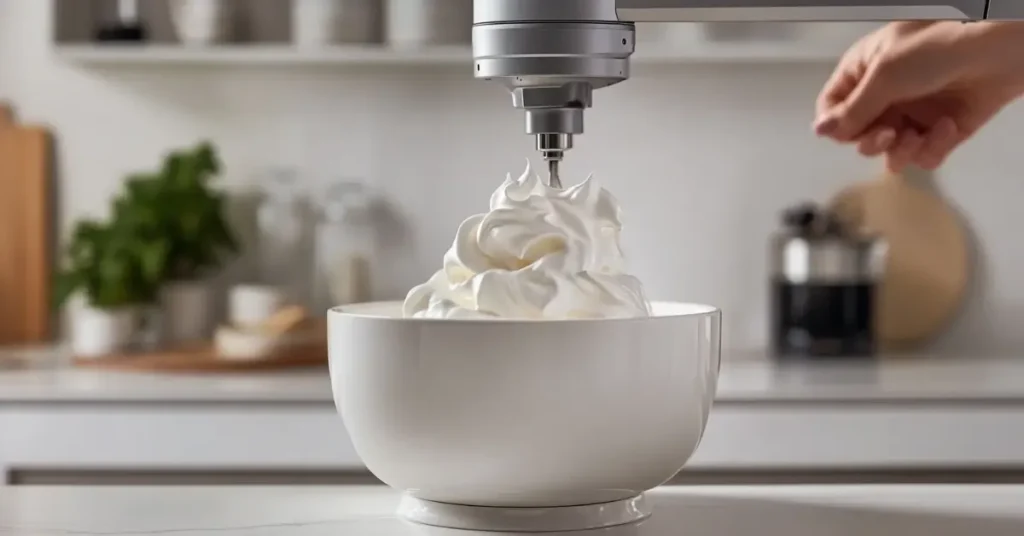
Common Mistakes and How to Fix Them
Over-Beating Egg Whites
Over-whipped egg whites can ruin the structure of pavlova without cornflour. While stiff peaks are necessary, beating the whites too much causes them to separate and become grainy.
Signs of Over-Beaten Egg Whites:
- A dry, clumpy texture instead of a glossy meringue.
- Difficulty incorporating sugar evenly.
- A deflated or cracked pavlova after baking.
How to Fix It:
- If you notice grainy whites, start over with fresh eggs.
- Always beat at medium speed to avoid rushing the process.
- Stop whipping once the peaks hold their shape but still appear shiny.
Incorrect Oven Temperature
Oven temperature plays a critical role in the success of pavlova without cornflour. A temperature that’s too high can cause the pavlova to crack, while one that’s too low may result in a weepy, undercooked center.
How to Avoid Temperature Issues:
- Use an oven thermometer to verify accuracy.
- Bake at 250°F (120°C) for gradual drying and even baking.
- Resist opening the oven door during baking to prevent heat loss.
Improper Cooling Methods
Cooling is just as important as baking when making pavlova without cornflour. If removed from the oven too soon, rapid temperature changes can cause cracks and collapse.
Best Cooling Techniques:
- Turn off the oven and leave the pavlova inside for at least 1 hour.
- Slightly open the oven door to allow slow cooling.
- Avoid moving the pavlova too soon, as it is fragile when warm.
By following these guidelines, you can prevent structural issues and achieve a flawless pavlova without cornflour.
Does Pavlova Taste Different Without Cornflour?
Comparing Flavor and Texture
When people ask, can you make pavlova without cornflour, one of their concerns is whether it will taste different. Fortunately, cornflour doesn’t contribute much to the flavor, so its absence won’t significantly change the sweetness. However, it does impact the texture.
Key Differences in Texture:
| With Cornflour | Without Cornflour |
|---|---|
| Slightly softer interior | Firmer, sometimes drier inside |
| More moisture retention | Less moisture, slightly crispier |
| Slight starchiness | Pure egg white flavor |
By carefully selecting substitutes like arrowroot powder or potato starch, you can achieve a texture that closely resembles traditional pavlova.
How to Adjust Sugar and Acidity
Since cornflour helps control moisture, you may need to slightly tweak sugar and acidity levels when making pavlova without cornflour.
- Increase sugar by 1–2 tablespoons if the meringue seems too dry.
- Adjust vinegar or lemon juice slightly to balance stability without over-softening.
- Use fine caster sugar to help stabilize the meringue and maintain structure.
These small adjustments will ensure that your pavlova without cornflour remains flavorful and well-balanced.
Can You Make a Vegan Pavlova Without Cornflour?
Egg-Free Alternatives
For those avoiding both eggs and cornflour, making a vegan version of pavlova without cornflour is entirely possible. The best alternative is aquafaba—the liquid from canned chickpeas—because it mimics egg whites when whipped.
Best Egg-Free Alternatives:
- Aquafaba – The most effective substitute for egg whites.
- Flaxseed gel – Provides structure but is less airy.
- Agar-agar mixture – Helps with stability.
Achieving a Meringue-Like Texture
To make vegan pavlova without cornflour, follow these tips:
- Whip aquafaba until stiff peaks form—this takes longer than egg whites.
- Use cream of tartar or lemon juice to improve stability.
- Add arrowroot or potato starch to help retain structure.
These adjustments will help create a light, airy, and crisp vegan pavlova.
Storing and Serving Pavlova Without Cornflour
Best Storage Practices
When making pavlova without cornflour, proper storage is crucial to maintaining its texture. Without starch to absorb excess moisture, pavlova can soften quickly.
Storage Tips:
- Keep in an airtight container at room temperature.
- Do not refrigerate unless absolutely necessary.
- Store leftovers separately from toppings to prevent sogginess.
How to Prevent Weeping and Sogginess
Without cornflour, pavlova may be more prone to absorbing moisture. To prevent a weepy or soggy dessert:
- Avoid humid environments when storing.
- Bake slightly longer to reduce internal moisture.
- Only add toppings right before serving to maintain crispness.
By using these techniques, you can keep your pavlova without cornflour fresh and delicious.
FAQs About Making Pavlova Without Cornflour
What Happens If You Don’t Add Cornflour to Pavlova?
If you omit cornflour from pavlova, the dessert may have a slightly different texture. Cornflour helps stabilize the meringue and retain moisture, preventing the interior from becoming too dry. Without it, pavlova may:
- Have a crisper, slightly drier center rather than a soft, marshmallow-like texture.
- Be more delicate and prone to minor cracks.
- Absorb moisture faster, which may lead to weeping in humid conditions.
However, if you whip the egg whites properly, bake at the right temperature, and cool the pavlova gradually, you can still achieve an excellent result without cornflour.
What Is a Substitute for Cornflour in Pavlova?
If you’re making pavlova without cornflour, several substitutes work well:
- Arrowroot powder – Provides a similar moisture-absorbing effect without altering taste.
- Potato starch – Helps stabilize the structure while keeping the interior soft.
- Cream of tartar – Strengthens the egg whites, though it doesn’t absorb moisture like starches.
- Tapioca starch – Creates a slightly softer pavlova with good stability.
Each substitute has a slightly different effect on texture, so choosing the right one depends on personal preference.
Does Pavlova Need Cornstarch?
No, pavlova does not need cornstarch (cornflour), but it is traditionally included to help with moisture retention and texture. You can successfully make pavlova without cornflour by using an alternative starch or simply adjusting the baking and cooling process to prevent excessive drying or weeping. Many bakers prefer the crispier result of pavlova made without cornflour.
Do You Need to Add Cornflour to Meringue?
Not all meringues require cornflour. Classic French meringue, which is used for pavlova, can be made without it. However, cornflour is often added when making pavlova to ensure the right balance of crispness and chewiness. If omitted, the meringue may become more fragile, but careful whipping, baking, and cooling techniques can compensate for this.
Ultimately, pavlova without cornflour can still be light, airy, and delicious if the right adjustments are made.
Conclusion
So, can you make pavlova without cornflour? Absolutely! With the right substitutes and techniques, you can create a crisp, airy, and delicious pavlova without sacrificing quality. Whether you’re avoiding cornflour due to allergies, dietary restrictions, or personal preference, options like arrowroot powder, potato starch, and cream of tartar provide excellent alternatives.
By carefully managing whipping, baking, and cooling, you can achieve the perfect balance of textures. Additionally, if you’re looking for a vegan pavlova without cornflour, aquafaba serves as a fantastic egg substitute.
With these expert tips, you can confidently bake a flawless pavlova without cornflour that impresses every time. Enjoy experimenting and creating a dessert that suits your needs while still capturing the magic of this classic treat!

